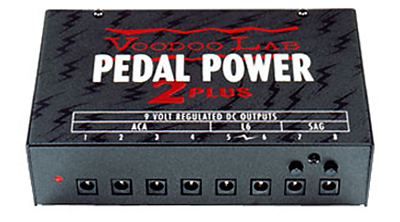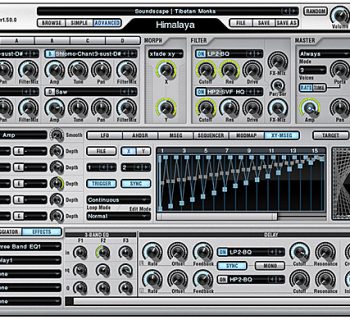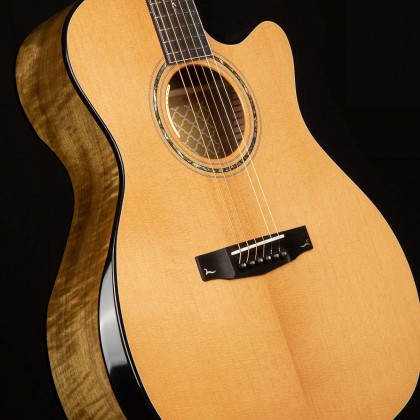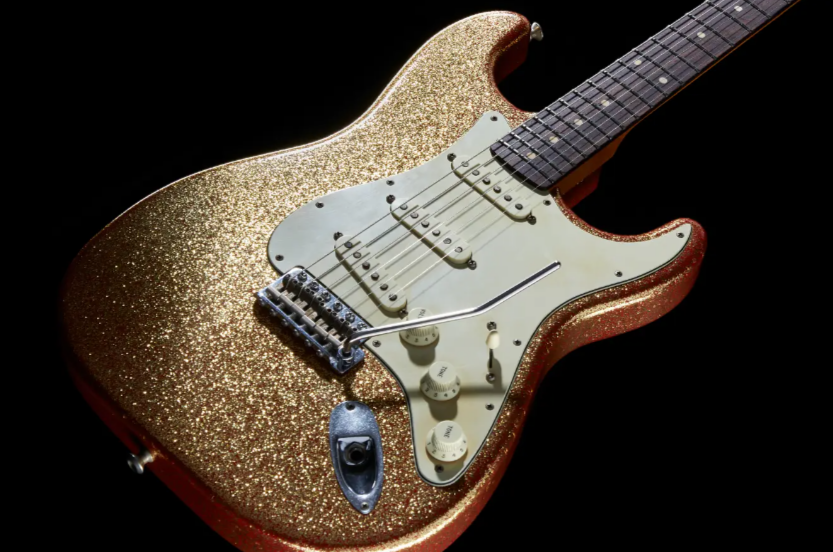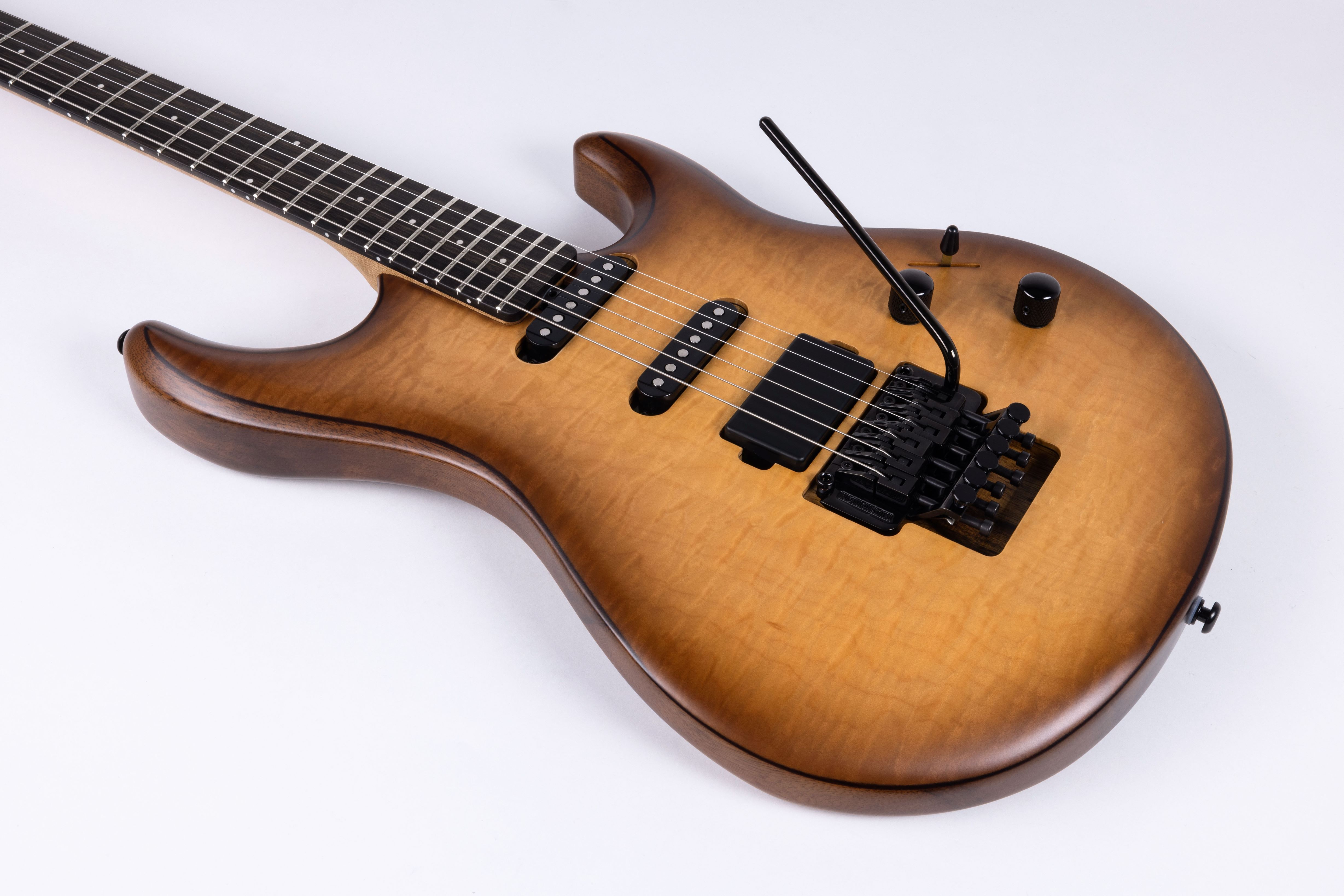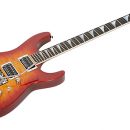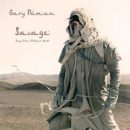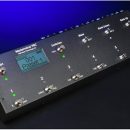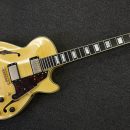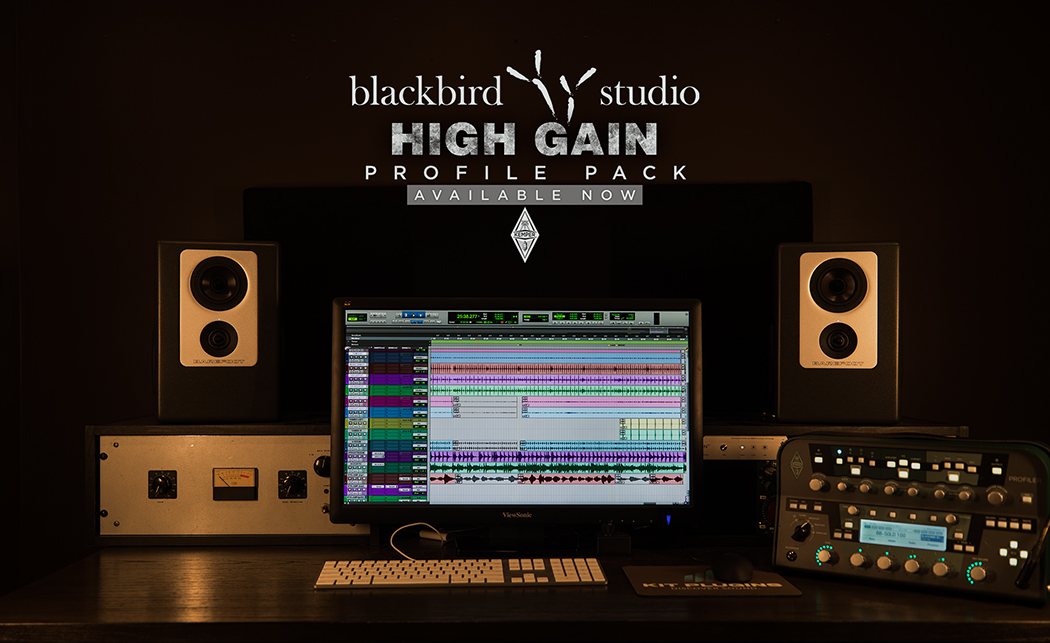 Many pedals work just fine with only one setting at a time for their sound – just twist a few knobs to taste and you’ve got your sound. But when it comes to analog or digital delay, there are so many variations on the sonic result that one setting can’t begin to cover all the sounds a delay lover will need: simple eighth note patterns that repeat hundreds of times, dotted quarter note patterns that groove to syncopated rhythms, slap-back echoes, and so on.
Many pedals work just fine with only one setting at a time for their sound – just twist a few knobs to taste and you’ve got your sound. But when it comes to analog or digital delay, there are so many variations on the sonic result that one setting can’t begin to cover all the sounds a delay lover will need: simple eighth note patterns that repeat hundreds of times, dotted quarter note patterns that groove to syncopated rhythms, slap-back echoes, and so on.
For many of us, flexibility related to setting our delays has required investment in rack-mounted signal processors and MIDI foot controllers, but with the choice of delay units currently available, many players can seriously rethink their dependency on rack-mounted delay units.
The three pedals we looked at this month – the Boss DD-20 Giga Delay, Line 6 DL4 Delay Modeler, and Rocktron Cyborg Digital Delay – all have internal memory that enables them to store numerous delay settings, many of which are immediately available at the stomp of a button.
All three pedals are top-rate when it comes to signal quality, noise, and quality of construction – we wouldn’t hesitate to use any of these pedals with the finest guitar rigs. They each provide digital delays with sound-on-sound capabilities for looping, and they all take different approaches to fulfilling players’ needs for digital delay pedals. Ultimately, they are quite different from one other when it comes to their overall features, usability, and sounds. Which one is right for you will depend on the features that matter most for your particular style of playing.
In general, we found that each pedal had its own sonic character or vibe. The Boss DD-20 sounded like a modern digital delay machine, the Line 6 DL4 was our vintage delay superhero, and the Rocktron Cyborg was our wolf in sheep’s clothing – a solid, blue collar workhorse on the outside, with advanced MIDI capabilities on the inside.
We loved the Boss DD-20 for its extensive feature set, and particularly appreciated its digital display. Delay times can be displayed (and dialed in) in either milliseconds (ms) or Beats Per Minute (BPM), very useful for recording applications. Connecting a momentary footswitch expanded our control options so that one of the built-in pedals didn’t have to serve double duty in its functions, and advanced features like delay modulation and unique sound effects rounded out the package.
Operating the DD-20 comes with a slightly steeper learning curve than the other pedals to truly take advantage of its abilities. If you’re downsizing from programming rack delay units, though, this really shouldn’t be an issue.
We loved the Line 6 DL4 for its vintage sound. Modeling technology hasn’t yet convinced us to give up our tube amps, but it definitely works for us in the context of an effect pedal. We created delays that had the sound of analog warmth with modulation effects on the repeats (the other pedals offer modulation effects in varying degrees), and an externally connected expression pedal was easily configured to control multiple effect parameters concurrently on a per-preset basis. The lack of a digital display makes programming some sounds more challenging and requires keeping the Pilot’s Handbook nearby to refer to some tables and illustrations.
We loved the Rocktron Cyborg for its clean sound and interface simplicity, while it still gave us essential memory for custom settings. Easy to use, the Cyborg’s impressive eight memory locations become a whopping sixty-four when controlled via a MIDI foot controller (connected with a special breakout cable). Additionally, use of an external MIDI controller greatly expands the control options for this pedal. The Cyborg also includes Rocktron’s famous HUSH noise reduction technology – a nice touch if this pedal is following a noisy “classic” in your signal chain.
Features
| Boss DD-20 | Line 6 DL4 | Rocktron Cyborg |
Memory, Ins and Outs
The Boss DD-20 and Line 6 DL4 are each full stereo digital delay units providing stereo inputs and outputs (and mono operation, of course). The DD-20 also includes a headphone output – useful, but not for headphones, as described later. The Rocktron Cyborg is a mono-only delay unit, so for specific applications such as splitting signals to two amps, it may not be the right choice. For most typical mono guitar rigs, though, all of these pedals will work great.
The Boss DD-20 gives players access to four different delay settings at the touch of a footswitch. Sounds can be selected either by cycling through the four memory locations via the right-most footswitch (which serves double-duty as a Tap Tempo switch), or via an externally connected PS-5U or PS-5L switch pedal (in which case the built-in pedal can work as a dedicated Tap Tempo pedal). The second footswitch is used for On/Off control of the selected delay.
The Line 6 DL4 has memory for three delay settings. Four footswitches provide direct On/Off access to the three delay settings, and Tap Tempo is set via the fourth switch. An external expression pedal can be connected for real-time control of multiple delay parameters.
On its own, the Rocktron Cyborg provides access to eight delay settings, selected via a knob on the top of the unit. Footswitches are only provided for On/Off and Tap Tempo. Using a special breakout cable, though, the Cyborg is MIDI controllable, and when connected to any popular MIDI foot controller, the user gains access to sixty-four memory locations (as well as control over numerous parameters). When used as a standalone pedal, some players may lament the fact that you have to physically turn a knob to select your different effect settings.
Sound and Control
The Boss DD-20 and Line 6 DL4 generate a wide range of delay sounds, and both of them feature models of some classic delay units. The DD-20’s modeling list features both the Roland RE-201 Tape Echo and DM-2 Compact Delay, while the DL4 has a more exhaustive list of models: Roland RE-101 Space Echo, Boss DM-2, Maestro EP-1 and EP-3, and the Deluxe Memoryman. But both of these units go even further, providing a wide range of additional digital delays.
Both units provide dual delays for complex delay styles (think of songs from U2 and you’re hearing dual delays or more), and both pedals provide programmable modulation for delay repeats, essential for recreating some vintage effects. The Line 6 DL4 has the edge (pun intended) in these categories, though. In the DD-20, the delay lines are connected in series, and the short delay can only be adjusted up to 100ms, whereas in the DL4, using the stereo delays (in mono) gives you two full parallel delays that can each be adjusted to their full 2.5 seconds of delay time. The DL4 also provides modulation control within five different delay types, whereas the DD-20 only provides one specific delay type with modulation control.
The Rocktron Cyborg is a simpler tool when used as a stand-alone delay pedal – effects are created without models and are primarily variations on the same basic digital delay. While it does offer phase modulation as one of its delay types, the modulation rate and depth are not adjustable directly from the pedal. However, if you connect the Cyborg to a MIDI foot controller, look out! The phase modulation settings are completely adjustable via Continuous Controller (CC) messages, along with most of the pedal’s other settings (see our chart below for a full review of its MIDI capabilities).
|
Rocktron Cyborg MIDI Continuous Controller Parameters
|
||
| Function |
CC Number |
CC Value |
| Effect Bypass |
6 |
1 or 127 |
| Hush Offset |
27 |
0 – 59 |
| Hush In/Out |
28 |
0 – 1 |
| Hush Threshold |
29 |
0 – 63 |
| Delay In/Out |
44 |
1 or 127 |
| Phaser In/Out |
45 |
1 or 127 |
| Phaser Rate |
101 |
0 – 127 |
| Phaser Depth |
102 |
0 – 127 |
| Phaser Resonance |
103 |
0 – 127 |
| Phaser Stages (2 or 4) |
104 |
1 or 127 |
| Delay Type |
108 |
0 – 7 |
| Delay Time |
111 |
0 – 124 |
| Delay Regeneration |
112 |
0 – 63 |
has numerous MIDI-controllable parameters.
All three pedals offer Reverse delays, and all of them provide sound-on-sound capabilities. The Boss DD-20 features an enormous twenty-three seconds of both delay time or loop recording time, while the Line 6 DL4 features 2.5 seconds delay time and fourteen seconds of sound-on-sound looping. The Rocktron Cyborg has a maximum two seconds of delay time and two-second loops, but you can overdub riffs to the point of rendering your sound useless before ever running out of memory.
With digital delay units, you might say that timing is everything. In that case, the Boss DD-20 wins the Most Accurate award. If you play live to click tracks, drum loops, or keyboard sequences, you’ll love the fact that the DD-20 displays delay time in milliseconds (ms), seconds, or Beats Per Minute (BPM) on its easy-to-view, backlit LCD display. With the Line 6 DL4 and Rocktron Cyborg, you dial delay times in traditional pedal fashion with knobs, or input them via Tap Tempo. Given the extensive MIDI capabilities of the Cyborg, we’re surprised that the pedal can’t be set to sync to an external MIDI clock source.
While the Boss DD-20 and Rocktron Cyborg maintain a buffered signal at all times, the Line 6 DL4 provides true bypass, which can be overridden and set to buffered if delay spillover effects are desired when turning the delay pedal Off. Of all the pedals, only the Boss DD-20 provides seamless transitions from one delay to another when changing sounds. The Cyborg adjusts the repeating signal to the new delay time, creating sometimes-interesting audio effects, and the DL4 unfortunately cuts off the repeats when a new delay sound is selected, even in delay spillover mode.
Other Features of Note
The Line 6 DL4 includes a Dynamic delay effect with ducking based on technology originally introduced in the TC Electronic 2290 studio delay – delay volume can adjust based on how hard or soft you play so that it is less present during heavy/busy phrases and more audible during melodic lines and soloing.
The Rocktron Cyborg includes Rocktron’s famous Hush noise suppression technology. If this delay pedal follows a string of noise makers, you may find this additional capability useful.
Usability
| Boss DD-20 | Line 6 DL4 | Rocktron Cyborg |
All three delay pedals were easy to use, yet each had a completely different interface for adjusting and selecting sounds. While the DD-20 and DL4 can run from either an AC power source or batteries (six AA in the DD-20 and four C cells in the DL4,), the Cyborg requires AC power only, and thoughtfully includes a 9V power supply. We had no trouble powering all of these delay pedals from a Voodoo Lab Pedal Power 2 Plus, and in fact recommend powering all of these from AC power sources. These powerful pedals will suck your batteries dry faster than you can repeat this sentence.
Boss DD-20
At first glance, the DD-20 looks more complicated than the rest of the bunch – traditional knobs, plus buttons, rotary encoder, LCD display, and LEDs all over the place… but spend a few minutes with it and you’ll find that it’s quite easy to use.
By default, the left footswitch turns delay effects On/Off and the right footswitch selects from five sounds – four saved to memory plus a fifth for whatever settings the knobs are currently at on the pedal itself. With some sounds, holding down the left footswitch activates other features such as warping or twisting the sound. Holding down the right footswitch changes it from Memory Select to Tap Tempo (indicated by an LED next to the pedal).
We plugged a Boss FS-5U footswitch into the DD-20 to simplify things – by default, the FS-5U became a Tap Tempo footswitch, and we just used the right footswitch in the DD-20 for selecting our sounds. There were alternate pedal configurations possible with and without the external FS-5U, including one mode that enabled us to toggle between two sounds (instead of scrolling through all five with a footswitch), but we liked the default configuration best.
Creating sounds was mostly straightforward – turn the dial to select a delay type, press the Tempo button to select a note pattern (eighth notes, dotted notes, triplets, etc.), use knobs to select Effect Level, Feedback (repeats), and Tone. To access extra features in certain sounds – tempo for the second delay in a Dual setting, or adjusting the modulation Rate and Depth – we had to hold down the On/Off footswitch while turning or pushing the multi-function Delay Time knob. These adjustments were easiest to make from a seated position.
There was a mistake in the Owner’s Manual that might cause some players confusion. While stepping on the On/Off footswitch and adjusting modulation settings for the Modulation delay, holding the footswitch down displays the rate value. To adjust the depth value, while still holding the footswitch down, you have to press the Delay Time knob once, which changes the display to the depth value, and then turn the knob to adjust its value.
A bright backlight was easily activated at the touch of two buttons on the DD-20 – useful for playing in dimly lit conditions.
The looping feature in the DD-20 enabled recording of loops up to twenty-three seconds in total length, but subsequent overdubs (of course) used up additional memory, as did stereo operation (should you desire to record stereo loops). It was helpful that the LCD display showed memory usage in percentages while recording loops, working down from 100% until memory was fully utilized.
Last, we have to talk about the headphone jack. Ordinarily, this wouldn’t strike many players as something even remotely needed in a pedal, but here’s a cool trick that the usually-clever folks at Boss may not have considered (at least, they didn’t talk about it in the documentation): we ran a mono cable from the headphone jack to our guitar tuner! This gave us a side-chain to a tuner that worked whether our amp was in Standby mode or not. For best tuning results, turn your delay and other preceding modulation effects Off first.
Line 6 DL4
The Line 6 DL4 was very easy to use thanks to an intuitive layout and simple operation. Three buttons enabled us to select from saved settings, and a fourth button enabled us to enter a delay time via Tap Tempo.
Creating our own sounds was as simple as selecting the delay type, adjusting the Delay Time, Repeats, Mix (effect level), and setting the Tweak and Tweez settings. Huh? Those last two knobs with clever names are adaptable – depending on which delay model is selected, these knobs control different settings. In the case of our analog or digital delays with modulation, for example, we used the Tweak knob to adjust modulation speed and the Tweez knob to adjust modulation depth, whereas with the Stereo Delay setting, these knobs let you set the Delay Time and Repeats for the second delay line.
How do you keep track of the Tweak and Tweez values for all the models? We kept referring to the Pilot’s Handbook, but the unit also comes with a handy reference sticker that can be attached directly to the pedal, or anywhere else that works for you.
Using a knob to adjust the feel of our rhythmic delay patterns was awkward. For players who love delay patterns based on triplets or dotted-note patterns, the DL4’s interface for selecting the rhythm pattern took us a while to master, and once dialed in, it seemed to us that stepping on the Tap Tempo would reset our delay to a straightforward quarter note or eighth note feel.
We then connected an expression pedal to the DL4 for additional control. Using a Roland EV-5 expression pedal, we were able to assign any knobs other than the model selection to the pedal and save the settings on a per-program basis. For example, with one of our delays, we assigned both Delay Time and Repeats to the expression pedal, while for another sound, we assigned only the Mix control to the pedal.
Are you a looper? Using the Loop Sampler was pretty easy. In this mode, the four switches take on recording and playback functions. We had no trouble recording loops with delays in them and then layering sounds on top. A Reverse setting enabled us to reverse our loops, and we could even mix a reverse loop with a normal loop overdubbed on top of it. Recording time was a generous fourteen seconds, and half-time operation gave us lengthy twenty-eight second patterns.
Rocktron Cyborg
If you’re the kind of player who doesn’t want to spend more than three minutes with a user’s guide, the Cyborg is for you. With the smallest feature set of the bunch (as a standalone pedal), it’s also the simplest programmable delay pedal to operate.
The user interface takes a very different approach to operation compared to other pedals we’ve used (not just limited to delays), and once we learned its operation, we found the interface quite clever.
The single On/Off switch and Tap Tempo were pretty self-evident, but the eight-LED display was different. Turning the left-most Preset knob selects one of the eight memory locations. Each location contains a different delay pattern – eight notes, triplets, quarter notes, etc. One location offers a quarter note delay with phase modulated repeats, one provides quarter note reverse delays, and one lets you record loops.
Within each of the eight memory locations, we could adjust the Time, Repeat, and Level controls for each type of delay (and save it in that memory location). As we adjusted each knob, the row of eight LEDs change function and visually showed us the adjustments that we were making. The beauty of this approach was that when we re-edited a preset, the first click of a knob reset the display to show our current setting. With the other pedals in this roundup, once you dial in your settings, you don’t know what they’re set to other than by sound (with the exception of the Boss DD-20 showing you the delay type and length on its display).
The looping feature enabled entry of two-second loops, and we were able to layer multiple parts on top of each other (and then play along with the mix) without running out of memory.
Unfortunately, you can’t select your delay preset from the footswitches – we had to select our saved delay settings via the Preset knob, so for use as a standalone delay pedal, you can only access one delay sound per song in typical use.
When an external MIDI foot controller is attached (a special breakout adapter cable is required), you can select from any of sixty-four memory locations directly. By default, the pedal contains eight identical banks of delay presets (e.g. preset #2, 10, 18, etc. all contain triplet delay settings), and once you select presets beyond the initial eight, you can edit them as with the first bank and save your customized delay settings into the pedal for recall via the MIDI foot controller.
Got noise? No problem. The Cyborg also incorporates Rocktron’s Hush noise reduction circuitry, and enabling the Hush function via a recessed switch reduced a small amount of noise in our test environment, but we didn’t have any particularly noisy pedals to throw in front of the Cyborg in the first place. For some pedal boards, though, this feature may help some players to reduce unwanted noise from their signal chain.
Performance Tip: Using a MIDI foot controller to send CC messages to the Cyborg, you can adjust numerous parameters described in the Features section. If you prefer to gig with a small pedal setup, you could use a MIDI controller at home to customize some sounds (such as adjusting the phase modulation values or On/Off state of the Hush circuitry) and save those changes to the first eight memory locations. Then, gig without the MIDI foot controller and just select delay sounds from the first bank of eight, pre-customized to your taste.
Sound
| Boss DD-20 | Line 6 DL4 | Rocktron Cyborg |
As we mentioned in the introduction, all three of these delay pedals sound great, though they each impart their own character. Any one of these pedals will sound beautiful in the most expensive guitar rigs, but determining which one has the sonic character that best suits your style of playing is going to be a decision that may take you a long time to figure out. We’re still on the fence deciding which pedal sounds best for our personal needs.
All pedals were tested independently (not daisy-chained) in the effects loops of both a Mesa/Boogie Road King Series II and Fender Super Sonic tube amp.
Boss DD-20
The DD-20 is an excellent sounding delay unit. If pristine clean digital delays are the goal you seek, then the DD-20 scores a touchdown and the extra point.
We particularly loved the Smooth and Modulate delays. The Smooth delay seemed to have a slight reverb-induced ambience – probably a very fast and quiet delay. The Modulate delay let us adjust the rate and depth of modulation on our repeats to give them a beautiful chorus shimmer, but we would have preferred the option to apply modulation to other delay types besides a pristine standard digital delay.
We also enjoyed the Dual delay, Standard delay, and the Analog delay (based on a Boss DM-2) settings. But as mentioned earlier, adding modulation to these delay types would have made them even more exciting.
The DD-20 also features some new effects, and while the Twist delay annoyed us more than it entertained us, the Warp delay was outstanding. It simultaneously increased the feedback level and volume while depressing the On/Off footswitch. This sound effect was extremely inspiring.
The only pedal of the bunch to include a dedicated Tone control, we initially made the mistake of leaving it at the center detent for all sounds (and thinking all the sounds were a bit too sterile), but subsequent experimentation found that setting it at three o’clock added warmth to the less analog-ish delay types.
Line 6 DL4
The Line 6 DL4 sounds great. Kudos to Line 6 for creating one of the warmest sounding delay pedals ever made. Ironic for a pedal based on digital modeling technology, the DL4 screams analog warmth all over.
Our favorite delays were the analog and digital models with modulation. We were able to dial in everything from subtle chorusing on our repeats to full-on warble and sonic debauchery. The Rhythmic Delay sounded great once we got our tempo and pattern dialed in properly, and the Masetro models gave us classic early seventies delay mojo. For the classic U2 vibe, running the Stereo Delay through our mono effects loops gave us a traditional dual delay that we liked a lot.
Some of the other delay types were extremely useful to us, too. The Reverse delay worked very well thanks to full control over time, repeats, and modulation, and the Auto-Volume Echo did a great job of simulating volume-knob violin simulations.
Rocktron Cyborg
The Cyborg has one basic digital delay, and it served it up equally as clean as the standard digital delays in the other pedals. One variation on the delay added a phased modulation to the repeats, and this imparted a wonderful vintage vibe.
The Reverse delay was nice sounding, too, but lacking modulation control (in the standalone pedal configuration), it gave us more of a modern studio reverse delay than a vintage sounding effect.
Documentation and Product Support
| Boss DD-20 | Line 6 DL4 | Rocktron Cyborg |
All three delay pedals came with excellent documentation. All functions were clearly explained in each, though the Cyborg’s documentation contained only limited details on its MIDI capabilities. (However, support was excellent and Rocktron sent us the detailed CC information).
The Line 6 Pilot’s Handbook stood out for containing photos of vintage pedals that were modeled along with detailed explanations of those classic delay pedals and how their sounds were implemented in the DL4.
Price
| Boss DD-20 | Line 6 DL4 | Rocktron Cyborg |
- The Boss DD-20 ($299) typically sells for approximately $180 and includes six AA batteries.
- The Line 6 DL4 ($349.99) typically sells for approximately $250 and includes four C cell batteries.
- The Rocktron Cyborg ($279) typically sells for approximately $180 and includes an AC power supply.
These are all power-hungry pedals. We suggest running all of them from AC power sources.
Contact Information
Boss
www.bossus.com
Line 6
www.line6.com
Rocktron
www.rocktron.com
Overall Rating - Product Summary


